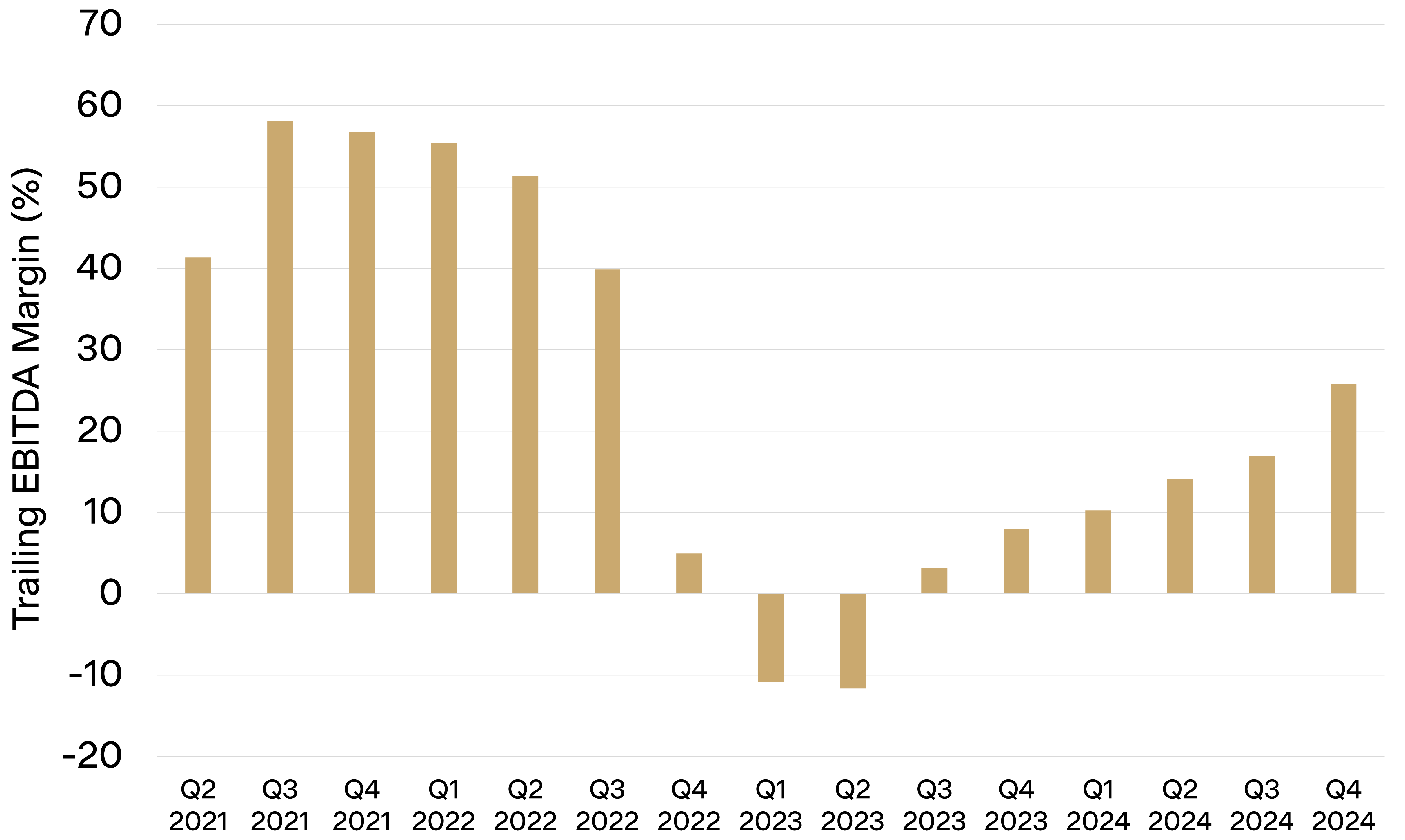Nutex Health - Emergency room level of potential upside
Despite a five-fold share price increase, this US micro cap is still a bargain. Sifting though the market's most unpopular stocks is fraught with danger. Explaining why you bought something everyone else thought was a dog isn't easy. And we have on the odd occasion purchased some dogs that we thought only had fleas but actually had terminal cancer. But among the beaten up is also where we have found some of our best Forager investments. Sometimes you get it right. Sometimes you get lucky. If you happen to get both, the upside can be enormous. We think we have that combination with Nutex Health (Nasdaq:NUTX).
This micro-cap US healthcare provider was first purchased in August 2024 and now sits among the portfolio’s largest positions. The Forager International Shares Fund acquired it during a period of turmoil, when the stock was priced for insolvency after falling some 99% from its 2022 peak. Today, it stands as one of the portfolio’s largest contributors, both for the quarter and over the past year.
Since listing via a backdoor merger in 2022, Nutex has faced significant challenges: falling insurance reimbursements, inconsistent shareholder communication, and two reverse stock splits just to maintain its NASDAQ listing. Despite that, a viable and increasingly valuable business has begun to emerge.
The model is straightforward in theory, though complex in execution. Nutex operates 24 micro-hospitals in suburban areas underserved by traditional healthcare infrastructure. It aims to offer faster service and more patient-friendly experiences, while focusing on the less complex (read more profitable) segments of emergency care. A major inflection point came with a structural shift in its reimbursement model. A Federal piece of legislation, the No Surprises Act (NSA), upended the reimbursement model, initially hitting Nutex hard.
The Act’s objective was to protect patients from large surprise medical bills where they had been treated outside their insurance company’s approved list of providers (“out-of-network”). While it achieved that objective, it also gave insurance companies cover to pay the hospitals substantially less than they were previously paid. Nutex’s revenue per patient dropped more than 30% and, in a relatively fixed-cost business, wiped out all of its profits.
By closing underperforming hospitals, renegotiating supplier contracts and performing an increasing proportion of high-value treatment in its own hospitals, Nutex had already taken steps towards a sustainable future. We had it pencilled to generate US$20 million of free cashflow in 2024, an attractive proposition relative to the US$70 million market capitalisation at the time of our first purchase. But there was an enormous amount of upside if Nutex could somehow return to prior levels of profitability. That “if” is becoming a reality.
Nutex and other healthcare providers have been in a battle with insurance companies to get what is argued to be their rightful payments ever since the legislation came into effect. Having exhausted the commercial options available to it, in July 2024 Nutex began pursuing claims through a binding federal arbitration process, a last resort included in the Act to protect providers.
Nutex has been submitting 60-70% of its patient visits to arbitration and disclosed a fourth-quarter success rate exceeding 80% on these claims. The payment awarded to it has ranged from 150% to 250% of the amount it initially received—an outcome with material financial implications. Importantly, these outcomes are consistent with the experience of other providers (the number of claims processed and awarded is in the hundred of thousands and publicly disclosed every six months).
Transformational outcomes
Following market close on 31 March, Nutex released an outstanding fourth-quarter result, far exceeding even optimistic expectations. The company booked $170 million in arbitration-related revenue—taking its total revenue to more than $3,000 per patient.
Most of the arbitration revenue remains uncollected (receivables rose to $232 million), but the cash should start flowing in the first quarter of this year. Margins remained strong despite substantial arbitration-related legal and processing costs, and full-year pre-tax profit attributable to shareholders reached $71 million.

Even after a fivefold share price increase since the Fund’s initial purchase—including a 50% rise post-result (after month-end)—the business continues to trade at a very attractive valuation. A market capitalisation of $388 million* represents roughly four times the pre-tax earnings we expect it to make in 2025. Assuming a bit of catch up from last year, we expect it to have something like $100 million of net cash by this time next year.
It remains a high-risk investment. Arbitration rules could change. A single tweet from the White House could move the share price violently. New competition will emerge if margins persist.
But each passing quarter reveals a more profitable, scalable, business trading at what remains an attractive valuation. This is a business that has gone from loss-making to generating significant cash and has a nice organic growth plan, including four new hospitals in 2025. The market has yet to fully adjust.
Opportunities like Nutex reflect Forager’s ability to uncover idiosyncratic ideas by staying small and nimble. Subscribe to our monthly and quarterly reports to discover more stock ideas like this one.
*This article was written when the share price of Nutex was $71.40. The Fund has been trimming its position at higher prices in April, in order to put money to work in dislocated markets elsewhere. It may continue doing so.
2 topics
.jpg)
.jpg)